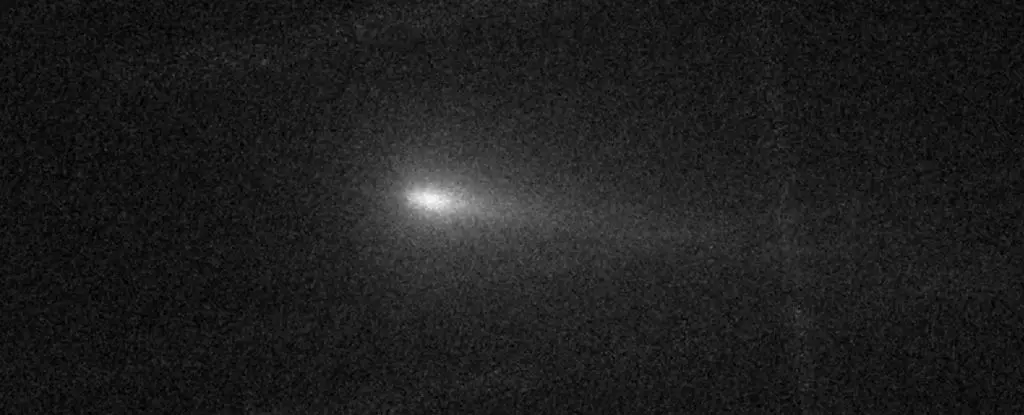As the fascination with comets continues to captivate stargazers and astronomers alike, the anticipation surrounding Comet C/2024 S1 has reached an all-time high. This rare Kreutz sungrazer comet, discovered on September 27, promises an intriguing spectacle as it nears the Sun on October 28, 2024, coming within a mere 1.2 million kilometers (750,000 miles) of our solar system’s central star. However, recent observations suggest that this celestial body is undergoing an unsettling transformation — disintegration. What does this mean for those hoping to witness its cosmic performance on Halloween, and what insights can we glean from this phenomenon?
Comets like C/2024 S1 are known for their unpredictable behavior, and unfortunately, it seems that the sudden disintegration observed over the past month is indicative of a common yet profoundly disappointing fate. Photographs taken throughout October have charted its brightening during outburst events, only to reveal a subsequent dimming that hints at its nucleus’s fragmentation. The anticipated brilliance that could have graced the night sky may be dimmed by the reality that the comet’s nucleus appears to be vanishing entirely.
The visual evidence showcases the comet glowing intensely before losing its signature brightness, evolving into a spectral trail of dust and gas. This transformation is not entirely unexpected; comets that draw close to the Sun frequently exhibit signs of instability, leading to a punishing fate. Observations of an outburst in C/2024 S1 suggest that it may be in the throes of a catastrophic breakup, a process where the nucleus — the central, solid core of the comet — begins to splinter under the gravitational and thermal strains encountered during its close approach to the Sun.
Comets are comprised of volatile materials, including ice and dust, predominantly hailing from the frigid regions of the outer solar system. Historically, disintegration events occur rapidly and are difficult to predict. Scientific speculation points to sublimation — the process where ice transforms directly from solid to gas — as a catalyst for the comet’s accelerated spin rate. This acceleration can produce a centrifugal force strong enough to fracture the nucleus, sending fragments scattering into space.
The cosmic occurrences of 2020, particularly the demise of Comet C/2019 Y4, serve as poignant reminders of the dramatic life cycles these icy wanderers endure. As observed through advanced instruments like the Hubble Space Telescope, C/2019 Y4 shattered under solar proximity, offering a poignant precedent for C/2024 S1’s current trajectory.
Despite the troubling reports of disintegration, there is a glimmer of optimism for skywatchers. While the nucleus may be in the process of vanishing, fragments can sometimes endure the harrowing experience of a close solar encounter. It is conceivable that a substantial piece of C/2024 S1’s nucleus might persist, continuing its journey toward perihelion. Factors such as its tail of gas and dust may also remain visible, providing a spectacular yet different visual phenomenon for observers.
Interestingly, C/2024 S1 is considered a fragment of a larger entity, with all Kreutz comets thought to be remnants of a significant event in 1106 CE, which saw the Great Comet break apart into smaller pieces. This historical context adds a layer of intrigue to C/2024 S1, which finds its origins intertwined with both spectacular celestial displays and the collective human experience of observing the night sky.
Currently, C/2024 S1 may still be observed through telescopes and binoculars, particularly in the Southern Hemisphere, while skywatchers in the Northern Hemisphere will have to wait for perihelion to see if remnants of the comet survive the fiery approach. Experts anticipate a potential sighting of a long, dragged tail devoid of a central nucleus — a hallmark of comets that have encountered a fate similar to what C/2024 S1 is experiencing.
As enthusiasts prepare for a celestial hunt, it becomes increasingly clear that while dreams of witnessing a brilliant comet may be dashed, the stories of cosmic disintegration provide the framework for enriching our understanding of these spectacular beings. As we wait for the skies to reveal their secrets, one truth stands firm: the universe is ever-changing, and in that change lies beauty, wonder, and the essence of astronomy. Happy stargazing!


Leave a Reply